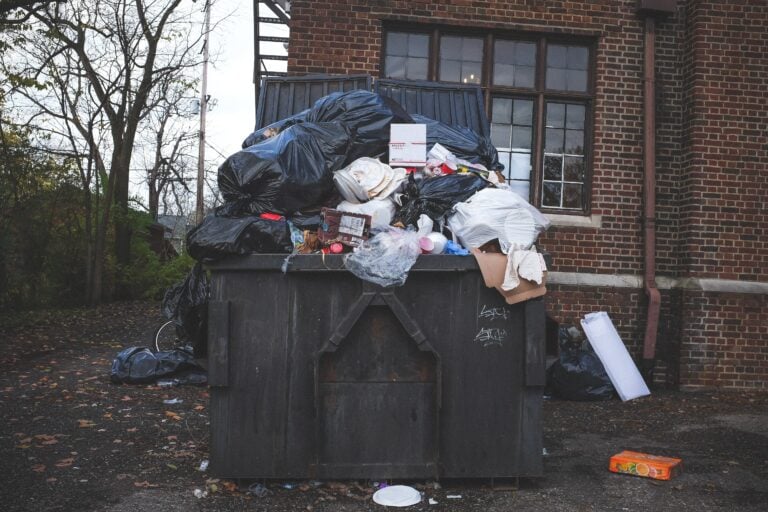7 Ways to Improve Your Home’s Carbon Footprint by Fall
 It’s little wonder homeowners are looking for ways to improve their homes’ carbon footprint by fall. Aside from the environmental benefits, homeowners face costly electricity and utility costs as the seasons change. Here’s why you should reduce your home’s energy consumption, plus projects you can do around the house to prepare for more energy-efficient living in the cooler months.
It’s little wonder homeowners are looking for ways to improve their homes’ carbon footprint by fall. Aside from the environmental benefits, homeowners face costly electricity and utility costs as the seasons change. Here’s why you should reduce your home’s energy consumption, plus projects you can do around the house to prepare for more energy-efficient living in the cooler months.
Why Slash Your Home’s Energy Consumption?
Green enthusiasts will want to lower their home’s carbon footprint before the fall to offset its contribution to climate change. According to one study, the residential sector is responsible for 20% of greenhouse gas emissions in the U.S. Due to having more square footage, those with greater wealth typically have about 25% higher emissions than low-income households.
However, homeowners who optimize their homes for energy efficiency reap the benefits of improved indoor air quality, greater comfort and savings on costly utility bills.
Since people stay inside more often during the cooler seasons, they tend to use more electricity to heat their homes. The U.S. Energy Information Administration says Winter 2024’s electricity prices will be 1% higher than 2023’s at 16.2 cents per kilowatt-hour. But what if there was a way to lower expenses?
How to Reduce Your Home’s Carbon Footprint by Fall
Improving your home’s carbon footprint can result in significant energy savings by fall and align with a sustainable lifestyle. Here are seven things you can do to prepare your home for the cold months ahead.
1. Conduct an Energy Audit
Homeowners can schedule an energy audit with a professional to assess where their home loses the most energy. An expert will then offer recommendations for improving efficiency, taking the guesswork out of lowering their home’s carbon footprint.
However, you can also conduct an energy audit yourself, looking for air leaks, proper ventilation, insulation and lighting performance. Create a checklist of items you want to tackle before the season changes to ensure you get everything done.
2. Upgrade Your Home’s Insulation
If you live in an older house or have not invested in maximizing your home’s efficiency, it may be time to upgrade your insulation. Insulation is known as the quiet yet mighty ally in the fight against climate change. Insulation will enhance indoor comfort by preventing heat gain and loss, controlling humidity levels, reducing ambient noise and decreasing allergens. Insulation reduces the need for propane, natural gas, fuel oil, and electricity to heat or cool homes. It minimizes the emission of pollutants like sulfur oxide, carbon dioxide and nitrogen oxides — lowering greenhouse gas emissions.
Consider adding new insulation to the floors, walls, basement, and attic. An insulated garage can also improve energy efficiency. Most garages are key entry points and cause ample heat loss, especially since they’re often located off primary living areas.
If four million homes in the U.S. invest in installing insulation, which is only 4% of North America’s housing stock, then it would be equivalent to planting 667 million acres of trees to eliminate carbon emissions from the atmosphere.
3. Install a Smart Thermostat
Smart thermostats include automated features for adjusting your home’s indoor temperature and lowering utility bills. In fact, the U.S. Department of Energy says upgrading your thermostat to an ENERGY STAR-rated model can save you 8% on heating and cooling costs, amounting to $50 annually.
This highly advanced thermostat learns your preferences, allowing you to control it from your smartphone. They can acclimate the indoor temperature based on home occupancy and remind you when to change the air filter to maintain optimal indoor air quality.
4. Seal Windows and Doors
Inspecting windows and doors for air leaks is easy enough. One obvious way is to check for condensation or fogginess. Otherwise, some people feel around the frames for cold air or hold up a plastic bag to see if it moves.
If there are gaps and cracks, it’s best to seal them immediately. Window and door stripping are ideal weekend projects to lock in warm air and keep cool air out when the seasons change.
5. Switch to LED Bulbs
Replacing incandescent light bulbs with light-emitting diodes (LEDs) is among the easiest energy-efficiency updates to lower your home’s carbon footprint. LEDs use 75% less energy than conventional bulbs and last 25 times longer, meaning less waste from frequent replacements.
6. Replace Old Appliances and Fixtures
Older appliances — refrigerator, microwave, stovetop, oven, dishwasher and laundry machine — consume much energy. By swapping them out for newer models, you can ensure they meet federal standards for energy efficiency.
For example, the DOE says ENERGY STAR-certified refrigerators consume 10%-30% less energy than standard models and save homeowners $220 over their 12-year life span.
Even replacing faucets and toilets can help you save energy and water. A WaterSense-labeled toilet reduces water consumption by 20%-60% — or 13,000 gallons of water annually. This equates to $110 in annual water savings and $2,000 over the toilets’ lifetime.
7. Maintain Your Water Heater
Your home uses a lot of electricity to heat water, so you should make sure your water heater is working properly. Have the heater inspected by an expert and make the necessary upgrades to avoid wasting energy.
If you have a gas model, upgrading to an electric water heater is also a good idea. Gas heaters have an energy factor (EF) between 0.5 and 0.7 and tend to lose energy during venting. This doesn’t happen with electric heaters, which have an EF over 0.9.
Save on Home Energy By Fall
Reducing your home’s carbon footprint is best for the environment and your household’s health and comfort. Take a few of the above steps by fall, and reap the rewards of energy efficiency and saving money on utilities.


